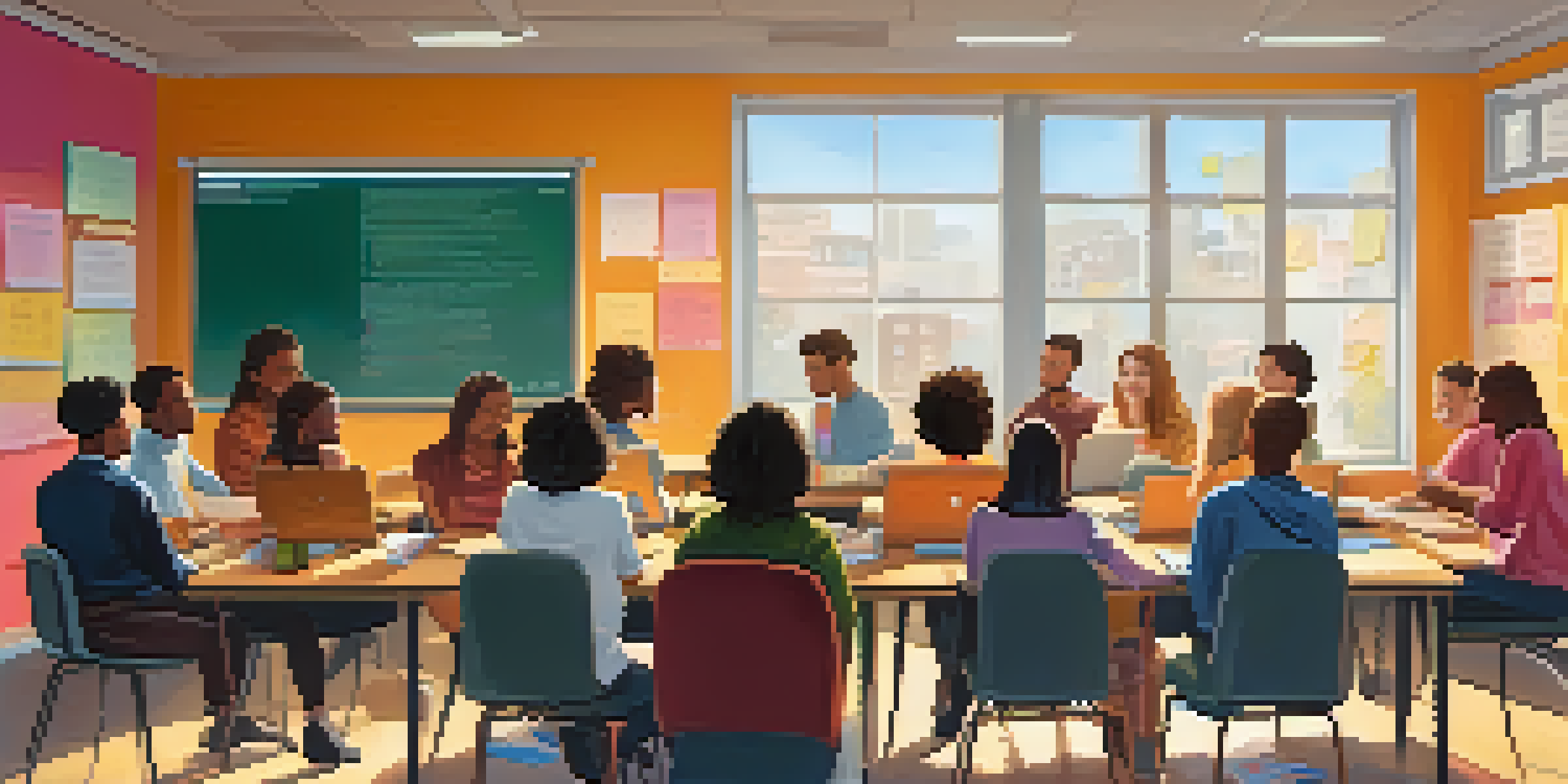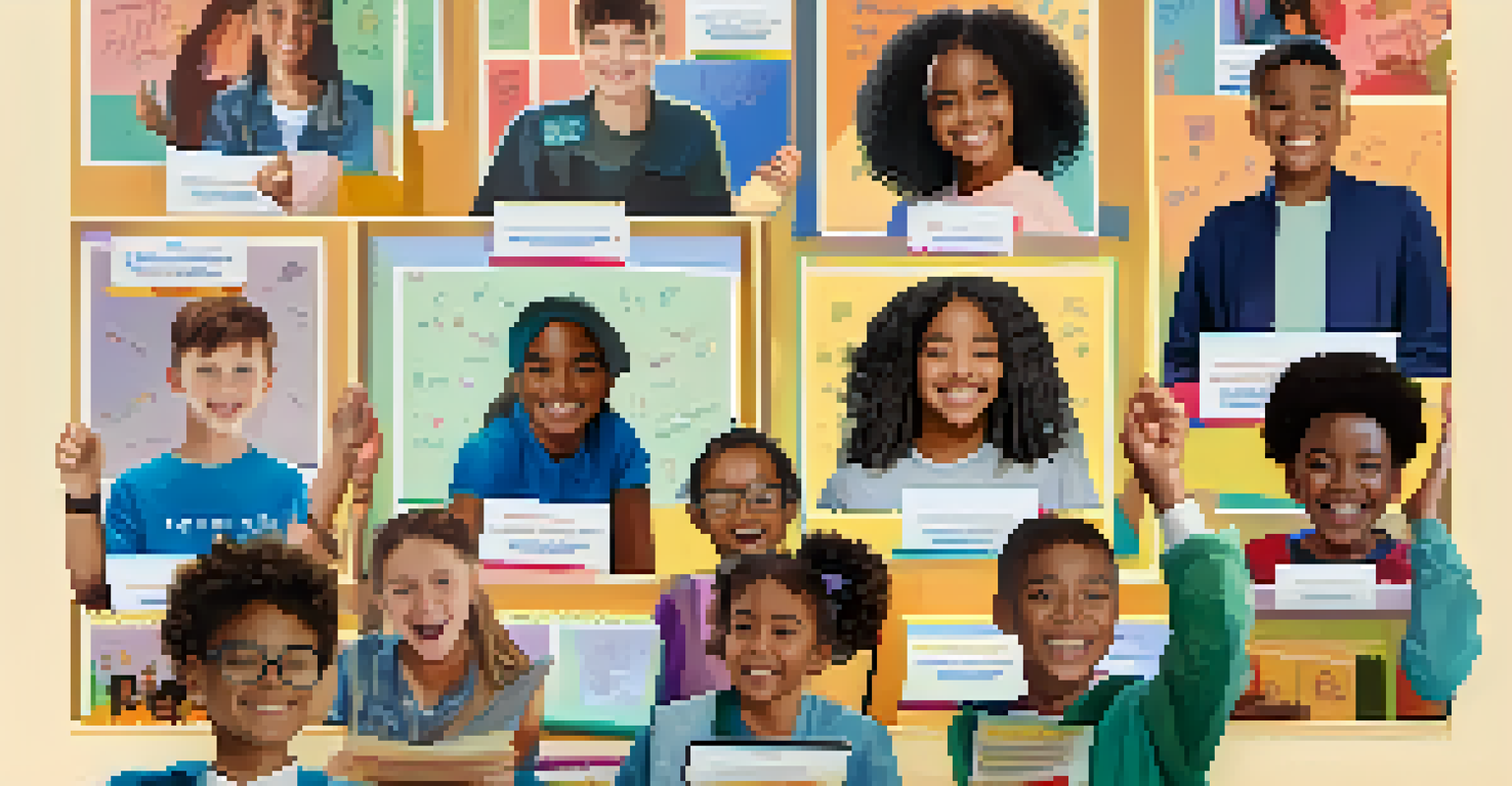Creating Community in Synchronous Learning Environments

Understanding Synchronous Learning and Its Importance
Synchronous learning refers to real-time online education where students and instructors interact simultaneously. This format can foster a sense of community that enhances the learning experience. Unlike asynchronous learning, where participants engage at different times, synchronous sessions allow for immediate feedback and collaboration.
Education is not the filling of a pail, but the lighting of a fire.
In these environments, students can ask questions, participate in discussions, and build relationships with their peers and instructors. This real-time interaction is crucial for creating a supportive atmosphere where learners feel connected. By leveraging technology, educators can create engaging experiences that mimic traditional classroom dynamics.
Establishing a strong sense of community in synchronous learning not only aids in knowledge retention but also boosts motivation. When learners feel part of a group, they are more likely to participate actively. Consequently, understanding how to cultivate this community becomes essential for educators aiming to maximize their students' success.
Setting Clear Expectations for Engagement
To create a vibrant online community, setting clear expectations for student engagement is vital. At the beginning of the course, instructors should outline how students are expected to participate, whether through discussions, group projects, or interactive polls. This clarity provides a roadmap for students and encourages them to take an active role in their learning.

Additionally, establishing guidelines for respectful communication helps foster a safe and inclusive environment. When students understand the norms of interaction, they feel more comfortable sharing their thoughts and contributing. This sense of safety is foundational for building trust among classmates.
Real-Time Interaction Boosts Learning
Synchronous learning fosters immediate feedback and collaboration, creating a supportive community that enhances the educational experience.
Instructors can also create engagement rubrics that outline participation levels, making it easier for students to gauge their involvement. By clarifying expectations, educators empower students to connect with one another meaningfully, nurturing a sense of belonging in the digital classroom.
Utilizing Breakout Rooms for Collaboration
Breakout rooms are a fantastic tool for enhancing community in synchronous learning environments. These small group settings allow students to collaborate on tasks, discuss ideas, and build relationships in a more intimate setting. By working together, students can engage more deeply with the material and each other.
The beautiful thing about learning is that no one can take it away from you.
Instructors can assign specific tasks or discussion prompts to guide conversations within breakout rooms. This approach encourages participation from all students, as smaller groups often lead to more comfortable and open dialogue. Additionally, rotating group members throughout the course helps students develop connections with different peers.
After breakout sessions, bringing the whole class back together to share insights fosters a sense of collective achievement. This structure not only enhances learning but also reinforces community, as students see the value of their contributions and the diversity of perspectives in their cohort.
Incorporating Icebreakers and Community-Building Activities
Icebreakers are a fun and effective way to kick off a synchronous learning session and build community. These activities encourage students to share personal stories or fun facts, helping them get to know each other beyond just their academic roles. A simple question like 'What’s your favorite book and why?' can spark engaging conversations and connections.
In addition to icebreakers, ongoing community-building activities can be integrated throughout the course. For instance, creating a class project where students collaborate towards a common goal fosters teamwork and camaraderie. These shared experiences can strengthen bonds and enhance the overall learning atmosphere.
Clear Expectations Enhance Engagement
Setting clear guidelines for participation empowers students to engage actively, fostering a sense of belonging and trust within the classroom.
Moreover, the use of social media or online forums can complement synchronous sessions, allowing students to interact outside of class time. This combination of activities creates a rich tapestry of connections, making students feel more invested in their community.
Encouraging Peer Feedback and Support
Encouraging peer feedback is an excellent way to strengthen the community within synchronous learning. When students provide constructive feedback to each other, they engage in meaningful dialogue that enhances their understanding of the material. This collaborative approach not only benefits the recipient but also reinforces the giver's knowledge.
Creating structured opportunities for peer feedback can be done through group assignments or discussions where students review each other's work. This process fosters accountability and encourages students to take their assessments seriously. Furthermore, knowing that their peers are invested in their success can boost motivation.
Support among peers is crucial, especially in challenging courses. When students feel comfortable seeking help from classmates, it builds a culture of trust and collaboration. This supportive environment can significantly enhance the learning experience and foster lasting relationships.
Leveraging Technology for Community Engagement
Technology plays a pivotal role in creating community in synchronous learning environments. Tools like chat functions, polls, and interactive whiteboards allow students to engage with the content and each other in real-time. Leveraging these features can make sessions more dynamic and inclusive.
For instance, using live polls during discussions can gauge student understanding and spark conversations. This interactive element not only keeps students engaged but also empowers them to voice their opinions. Additionally, incorporating multimedia elements, such as videos or presentations, can cater to diverse learning styles and enhance community engagement.
Celebrating Success Builds Community
Acknowledging students' achievements and milestones reinforces a positive atmosphere, encouraging continued engagement and camaraderie among peers.
Moreover, using a Learning Management System (LMS) can facilitate additional communication outside of class hours. By providing a shared space for resources, discussions, and announcements, instructors can keep the community connected and informed, further enriching the learning experience.
Celebrating Achievements and Milestones Together
Celebrating achievements, both big and small, is key to fostering a sense of community in synchronous learning. Acknowledging students' progress, whether through shout-outs during classes or recognition in the LMS, reinforces a positive atmosphere. When students feel appreciated for their efforts, it encourages continued engagement and commitment.
Incorporating milestone celebrations, such as project completions or exam successes, helps build camaraderie among students. These shared moments allow learners to connect on a personal level and celebrate each other's hard work. It’s a powerful reminder that they are part of a supportive community working toward common goals.

Furthermore, creating a virtual 'wall of fame' for student accomplishments can also enhance this sense of community. This visual representation of success fosters motivation and encourages students to strive for excellence, knowing their efforts will be recognized and celebrated.